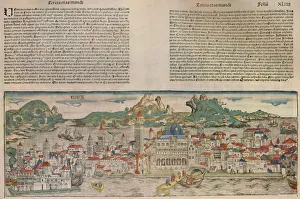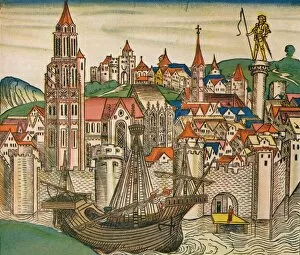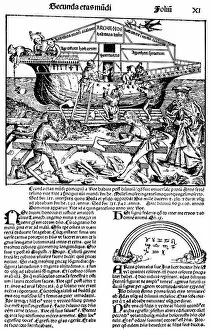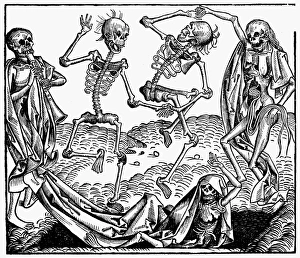Nuremberg Chronicle Collection
The Nuremberg Chronicle, published in 1493, is a remarkable piece of historical artwork that captures the essence of its time
All Professionally Made to Order for Quick Shipping
The Nuremberg Chronicle, published in 1493, is a remarkable piece of historical artwork that captures the essence of its time. This captivating chronicle takes us on a journey through various eras and events, showcasing the incredible talent of its creators, Michael Wolgemut and Wilhelm Pleydenwurff. One cannot help but be mesmerized by the vivid engravings depicting antediluvian monsters roaming the earth or the chilling portrayal of The Reign of Antichrist. These intricate engravings bring to life ancient tales and legends that have fascinated humanity for centuries. In contrast, we are also treated to woodcuts like Procession crossing a broken bridge, which showcases everyday life in Nuremberg during this period. The attention to detail is astounding as we witness people navigating their way across a damaged bridge with determination and resilience. The it also provides glimpses into significant historical figures such as Edmund Rich, the Archbishop of Canterbury, or Bede - both immortalized in stunning woodcut portraits. Their inclusion serves as a testament to their influence on society during those times. As we delve further into this masterpiece, we encounter Nineve from Liber Chronicarum by Hartmann Schedel - an awe-inspiring woodcut capturing the grandeur and majesty of this ancient city. Similarly striking is Maria Magdelena's depiction from Liber Chronicarum – her ethereal beauty shining through even centuries later. Ultima etas Mundi (The Last Judgement) leaves us breathless with its powerful imagery portraying divine justice unfolding before our eyes. And who could forget "Three Suns and Book Burning, " an engraving that speaks volumes about societal upheaval? The Phoenix published within these pages symbolizes rebirth and renewal - reminding us that history has always been cyclical; civilizations rise and fall while leaving behind traces for future generations to discover.




































